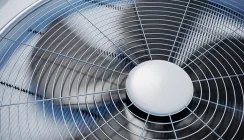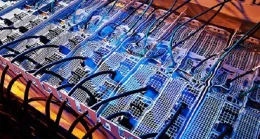Data Centre Cooling Solutions For Cloud To The Edge Sites
The range of cooling solutions available for server room and datacentre operators continues to evolve and can be split into two types: active cooling (forced convection) and passive cooling (natural connection). Innovation is driven by how to affect the most energy efficient and environmentally friendly cooling systems as the actual power demands for IT servers continue to increase.
Server rack power demands are now typically within 10 to 30kW. The rise of Edge computing and distributed data centre architecture could well see this rise further, putting extra burden on the cooling arrangements for smaller to medium sized server rooms and datacentres, which may not have been initially designed to meet the latest operational requirements.
Whilst it can be relatively easy to add additional cooling into network closets and computer rooms (principally with portable devices), cooling expansion needs to be a ‘day-one’ requirement for larger server rooms and datacentres. Expansion strategies should include a modular element at the overall room size and within define hot-aisle/cold-aisle and individual rack arrangements.
The principle cooling solutions available for larger server rooms and datacentres include:
- Computer Room Air Conditioning (CRACs)
- Integrated cooling
- In-row precision cooling
- High density cooling
- Computer Room Air Conditioners
This type of cooling is considered the more traditional approach and uses DX (Direct eXchange) air conditioners to flood the server room environment with cool air. The arrangement can include a single air conditioning unit (wall or suspended ceiling mounted) or multiple air conditioners installed around the room. The AC units are connected to external heat exchangers.
Cool air is pumped into the room from the AC units. The arrangement can provide redundancy (N+X) but can be less energy efficient that one that is more closely targeted at the sources of the heat generation. However, a hot-aisle/cold-aisle arrangement of the server cabinets can help improve efficiency as can piping of the cool air into a central containment area in which the server cabinets are situated.
Integrated Cooling Systems
This cooling solution can be useful where there is space within the server cabinet to include cooling within it. The typical arrangement is to place a cooling unit in the base of the rack and to have top or rear door fans to draw the cool air through the servers and out of the back. The arrangement is almost a closed-loop and one that is thermally neutral to the room ambient outside the server rack environment.
A typical AC unit size for this type of installation is 3-5kW. Server cabinet integrated cooling systems are ideal for small computer, network and server rooms and can be very energy efficient.
In-row Precision Cooling
In-row air conditioners are installed within the server cabinet row arrangement. In-row AC units can offer scalability and improved energy efficiency and more precision cooling. In-row cooling units are typically floor standing and situated at the end of a row of server cabinets.
One of the principle benefits of prevision air cooling is their energy efficiency. The cool air provision and return heat paths are close to the in-row AC units. Cooling technologies can include refrigerants or chilled water. The fans within the AC units also speed controlled based on temperature and load requirements. The cost of the installation rises in proportion to the number of server rack rows in that additional electrical power and cooling system pipework must be installed and connection made to external heat exchangers and chillers.
In-row air conditioners are suitable for both suspended and non-raised floors and are typically agnostic in relation to the make of server rack cabinet or containment system. The modular arrangements provide scalability and redundancy (N+X) and power and pipe connections can be bottom or top entry. For maintenance the best position is at the end of a cabinet row, but they can also be placed within the centre as in-row units are designed for front and rear maintenance access.
High Density Cooling
This type of cooling solution is often used for high density server cabinet rows within a server room or datacentre. A high density closed-loop cooling arrangement is made using in-row cooling units. The method is suitable for racks drawing from 10-60kW of power.
High density cooling solutions draw heat (hot air) from the rear of the servers in to the side of the cooling unit using high efficiency and temperature/load dependent fans. The hot air is cooled via an air-to-water heat exchanger and cold air is presented to the front of the servers. The typical AC unit size for an in-row solution is 10-30kW and the units my have 2-3 fans or more.
High density cooling has several benefits. The use of intelligently controlled fans allows the in-row units to adapt to the server utilisation and operating environment. The units are relatively easy to install and maintain. Resilient installations are possible to allow concurrent maintenance and inspection. The cooling arrangement is also highly energy efficient.
What does the future hold for data centre cooling?
Aside from the above practices there are several emerging technologies involving liquid cooling. Complete datacentre submersion is one approach being tested by Microsoft (https://news.microsoft.com/features/under-the-sea-microsoft-tests-a-datacenter-thats-quick-to-deploy-could-provide-internet-connectivity-for-years/). At the other end of the scale there are liquid cooler server rack doors can be adopted where cooling fans are not a viable option.
Adiabatic cooling is another alternative datacentre cooling solution that relies on reducing heat through a change in air pressure caused by air volume expansion. This type of cooling allows for free air cooling which is ultimately the most environmentally friendly available.
For more information see the Server Room Environments range of air conditioners or request a free site survey.


























